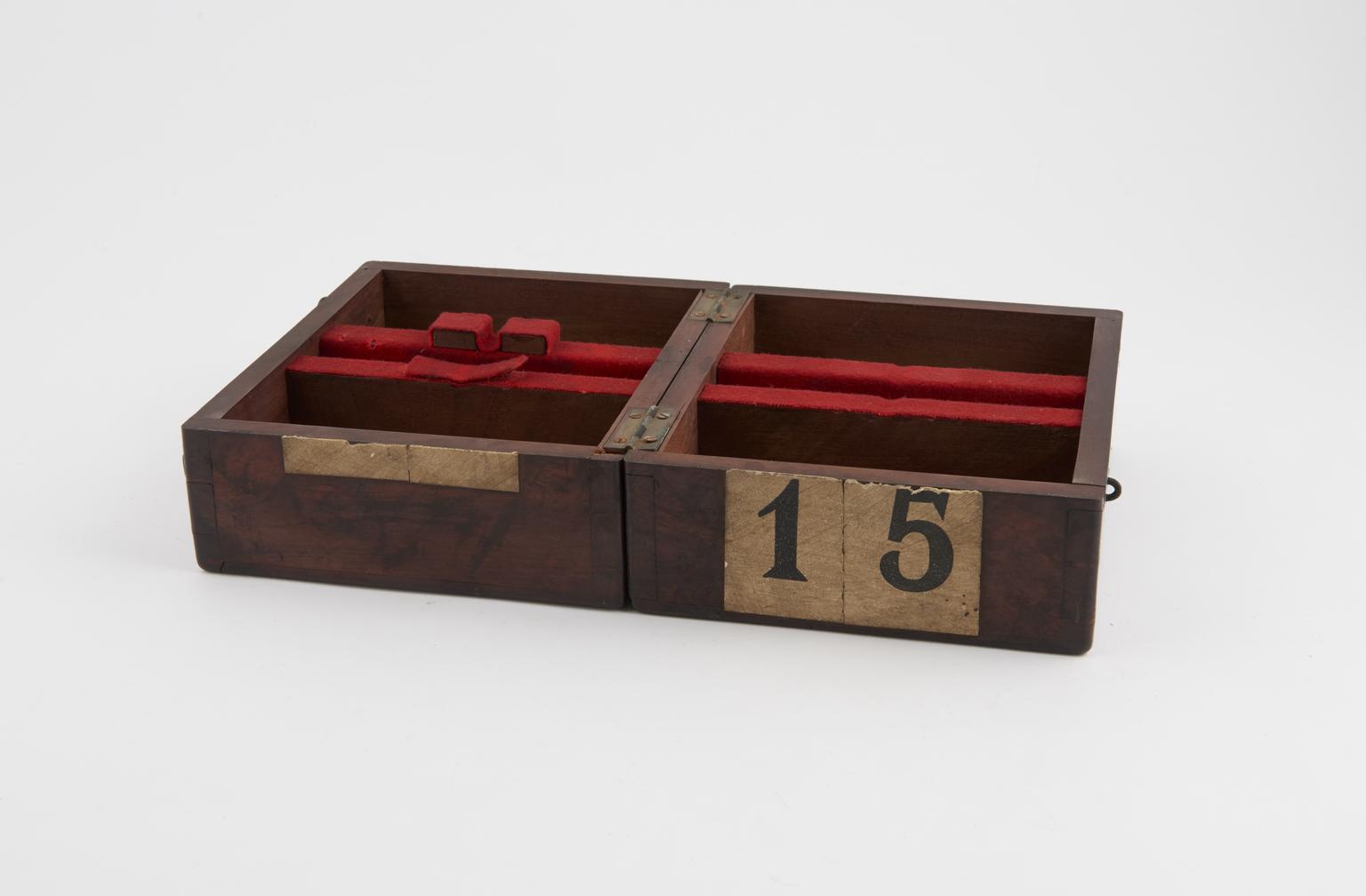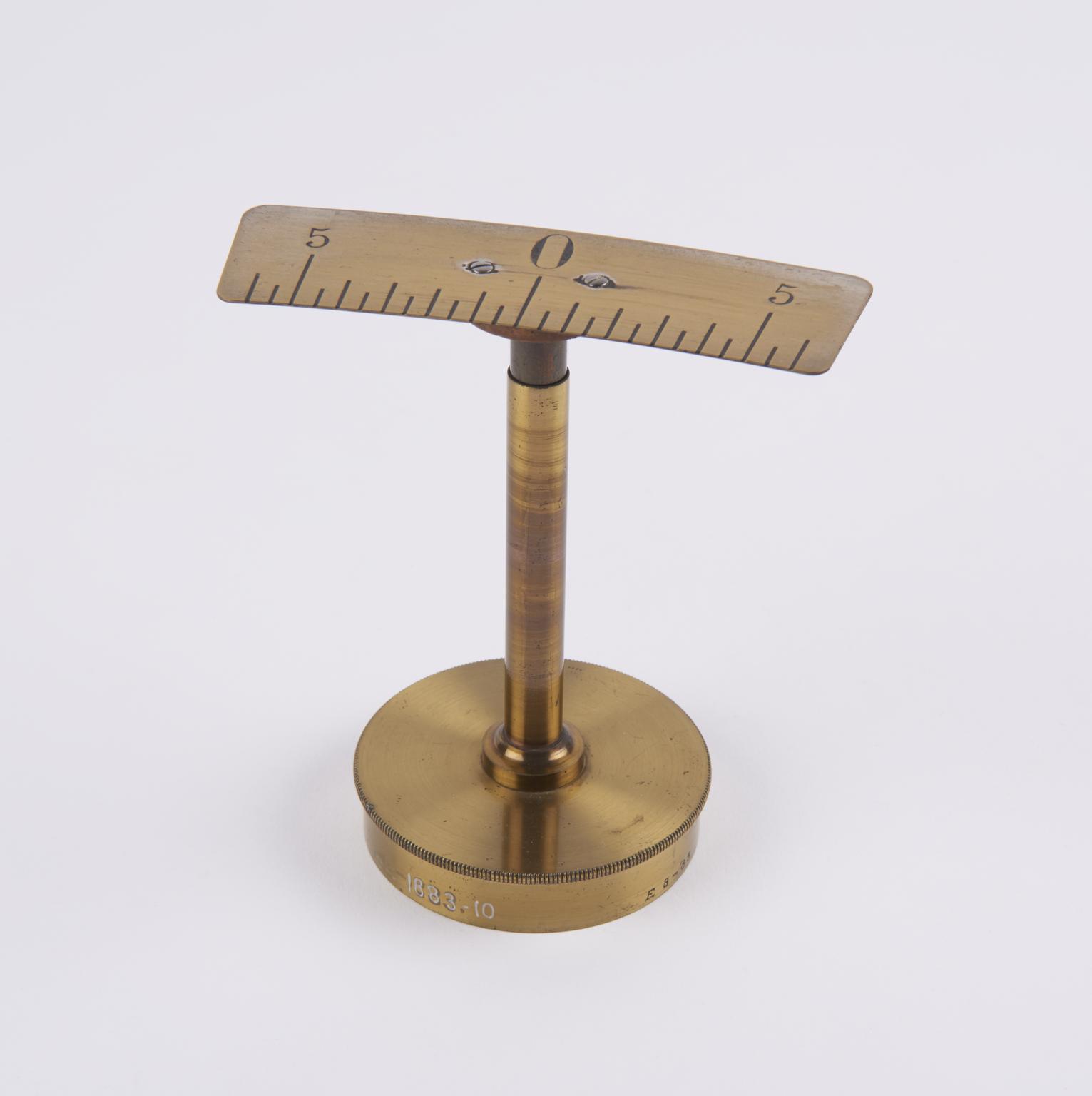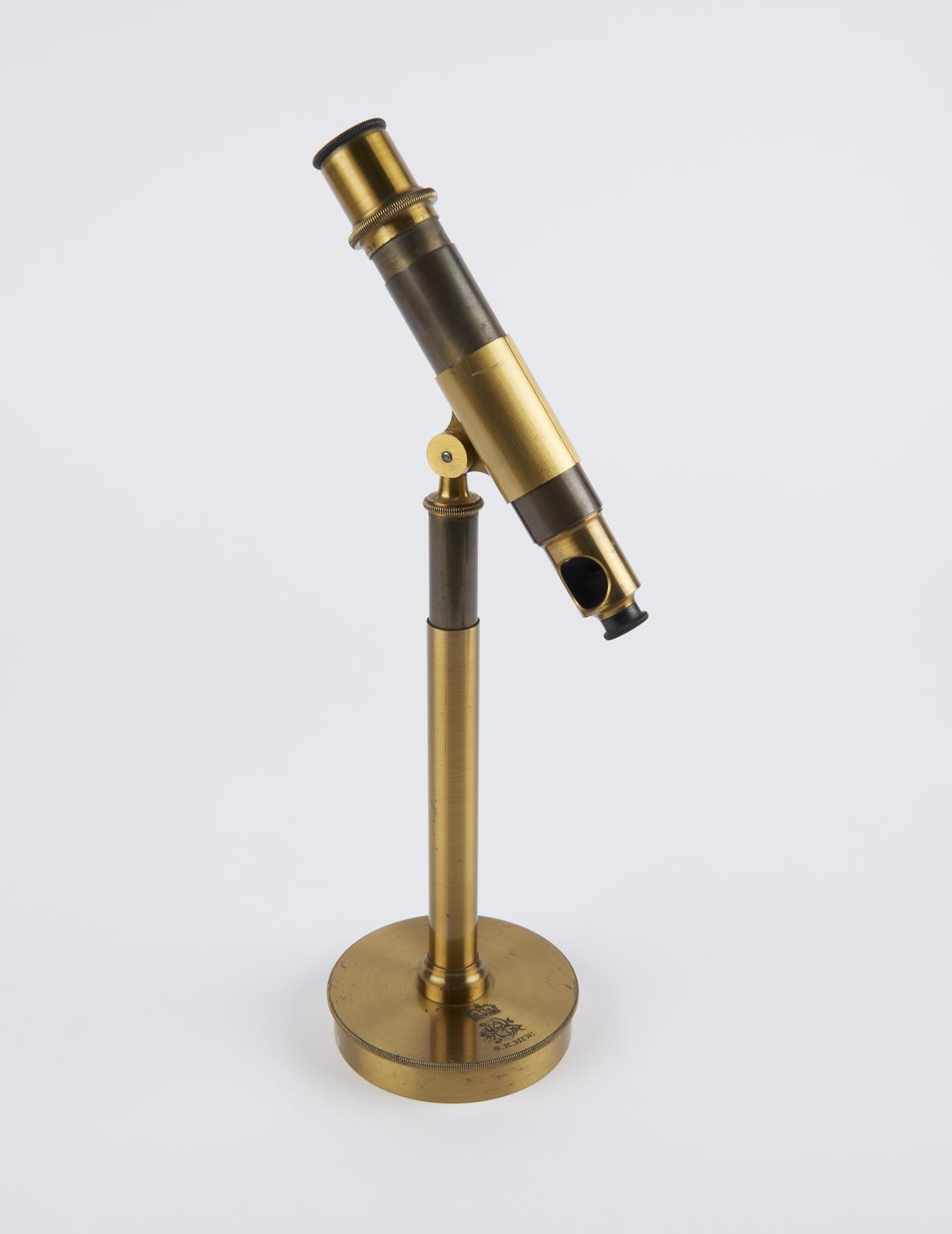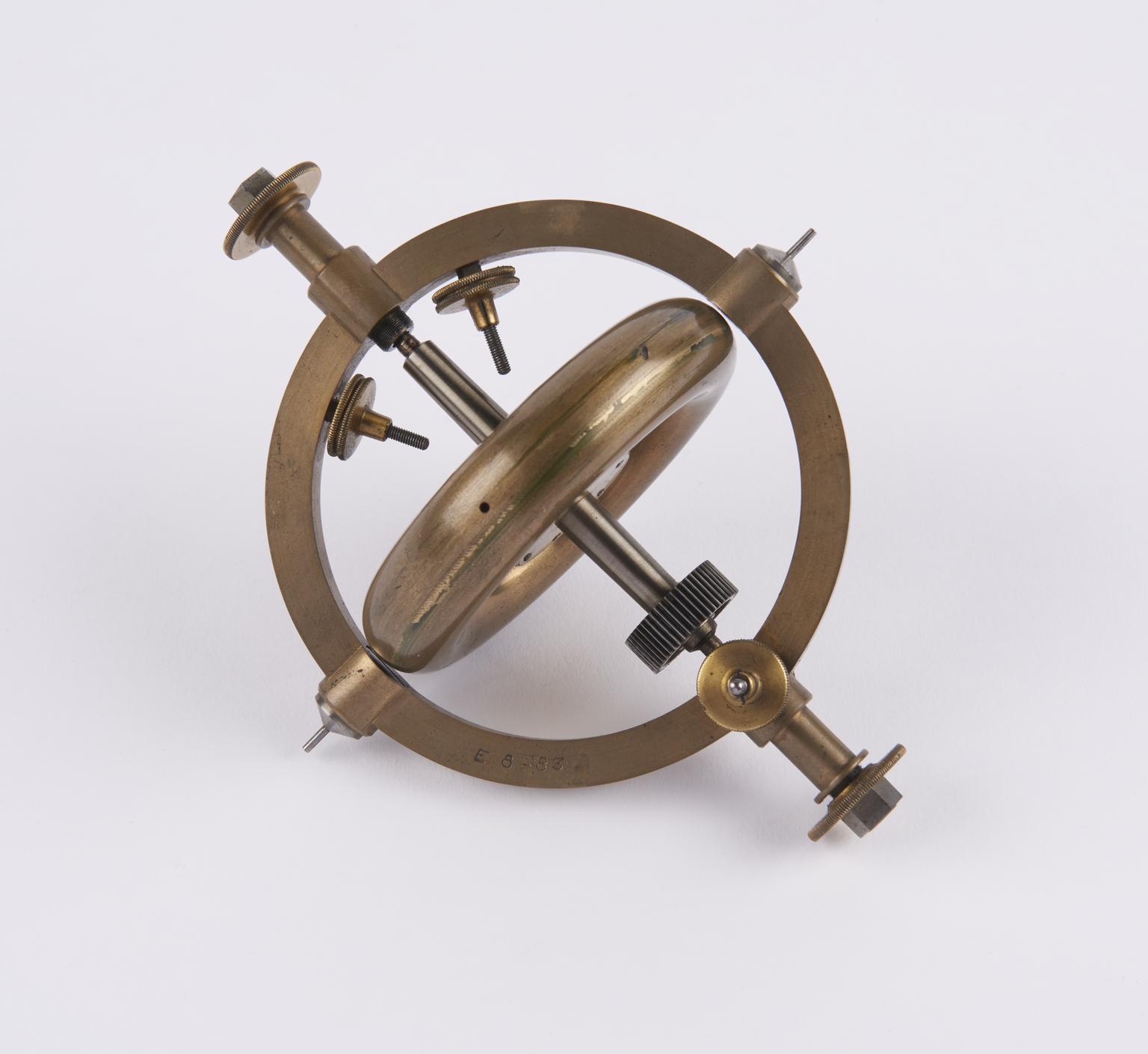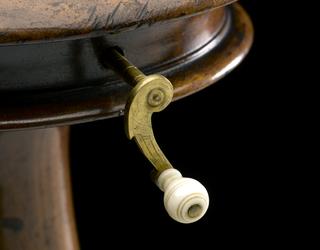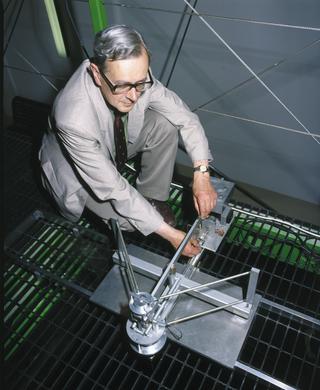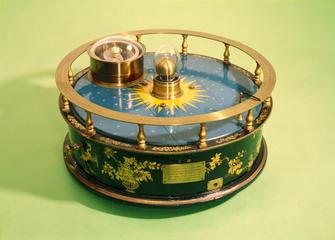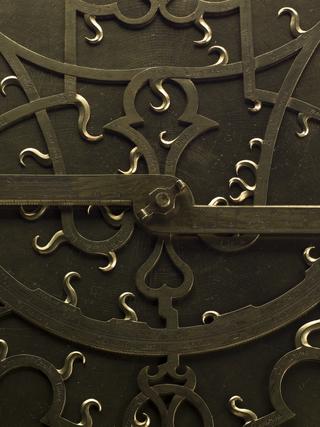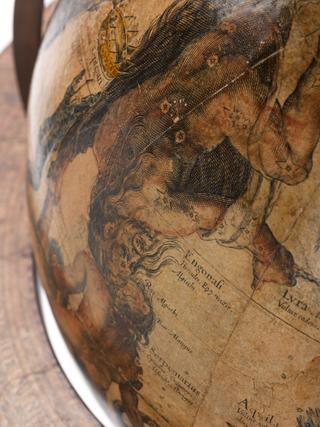Foucault's gyroscope demonstration apparatus; comprising, tripod stand 17 1/2-inch high with suspended circle, gyroscope spinning mechanism, two gyroscopes, small stand with scale, microscope and stand, mahogany stand for adjusting, gyroscope [boxes sold ScM.1806/83/1]. Used at the South Kensington Museums for demonstations.
Made by Parisian instrument makers Dumoulin-Froment, this apparatus was used to demonstrate the rotation of the Earth. Acquired by the Science Museum in 1883, it uses spinning gyroscopes, devices first conceived in 1852 by the French Physicist Leon Foucault. This followed his success, a year earlier, of using a pendulum to detect the Earth's rotation. In operation, the disc of the gyroscope is made to spin at high speed using the mechanism in the middle. Once spinning, it is transferred to the frame on the right and suspended by a fine silk thread with a thin pointer attached. The subsequent horizontal motion of the gyroscope can then be detected using the fine scale and microscope on the left.

